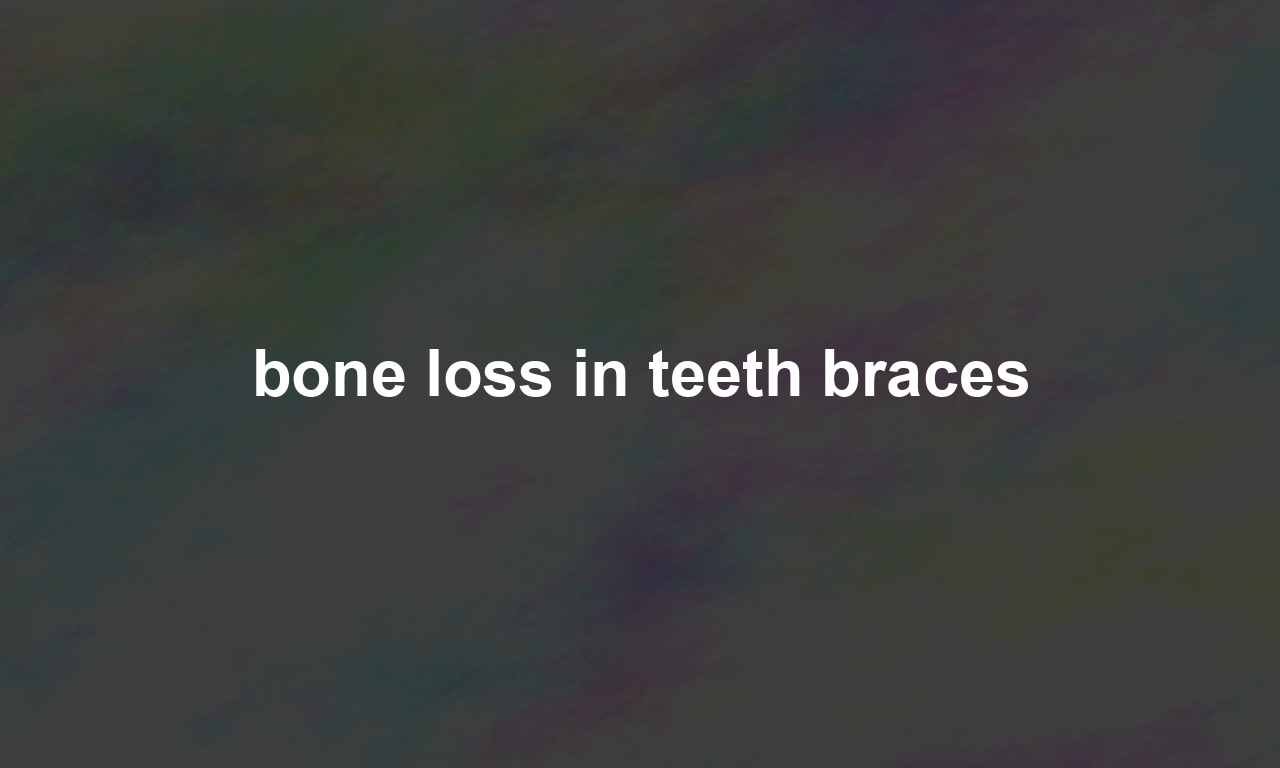Putting on braces is a rite of passage for many, transforming smiles and boosting confidence. But as you might embark on your orthodontic journey or continue it, have you ever wondered about potential side effects? Specifically, bone loss? Yes, it’s a topic that’s piquing the curiosity of many brace-wearers around the world. In this comprehensive guide, we dive deep into the relationship between bone loss and teeth braces—and we’ve got answers to the questions you didn’t even know you had!
Understanding Bone Loss in the Context of Braces
Let’s start by getting to grips with what bone loss actually means in the context of orthodontic treatment. Bone loss, often referred to as alveolar bone loss, is the loss of the bone that holds teeth in place. When it comes to braces, this concern revolves around whether the pressure and movement of teeth can, over time, lead to such an issue.
Is Bone Loss Normal with Braces?
This is a common question and a valid one. The short answer is no. While temporary changes in the bone structure around the teeth are normal due to the movement braces induce, significant bone loss is not. During orthodontic treatment, bone resorption and formation occur as teeth shift to their new positions, which is a natural part of the process.
What Causes Bone Loss?
Several factors can contribute to bone loss around teeth:
- Poor dental hygiene – Not maintaining proper dental hygiene can lead to plaque build-up, which can cause gum disease and ultimately result in bone loss.
- Gum disease (Periodontitis) – Advanced gum disease can destroy the bone supporting the teeth.
- Medical conditions – Certain conditions, such as osteoporosis, can contribute to the weakening of the bone structure around teeth.
- Improper braces installation – If not correctly managed, braces can place excessive pressure on teeth, causing unnecessary bone resorption.
What Are the Signs of Bone Loss?
Detecting bone loss early is crucial to prevent further dental issues. Here are some signs to watch out for:
- Loose teeth
- Receding gums
- Sensitivity when eating or drinking
- Pain or discomfort around teeth and gums
If you notice any of these symptoms, it’s best to consult your dentist or orthodontist promptly.
Prevention Is Better Than Cure
Wondering how you can preemptively strike against bone loss? Here’s how:
Maintain Excellent Oral Hygiene
Brush and floss regularly, ensuring you clean not just your teeth but also around the brackets and wires of your braces. Consider using an interdental brush or water flosser to reach those trickier areas.
Regular Dental Check-Ups
Your dentist isn’t just there to tighten your braces! Regular check-ups will help detect any early signs of gum disease or other issues that could lead to bone loss.
Healthy Lifestyle Choices
A balanced diet rich in calcium and vitamin D can strengthen your bones, including those supporting your teeth. Additionally, avoiding smoking and excessive alcohol consumption will greatly benefit your dental and overall health.
Learn more about preventive measures from NIH.
What If Bone Loss Occurs?
If you do experience bone loss while wearing braces, don’t panic. There are effective treatment options available!
Gum Grafts and Bone Grafts
These procedures can help regenerate lost bone and tissue. While gum grafts can restore receded gums, bone grafts can replace and restore lost bone.
Scaling and Root Planing
This deep-cleaning treatment can remove plaque and tartar from below the gumline, preventing further bone loss. Often used in the treatment of gum disease, it can be very effective in saving your smile.
Medications and Therapeutic Approaches
In some cases, medications like antibiotics or prescription mouthwashes can help control infection and support oral health. Laser therapy and other modern techniques can also foster the healing and regeneration of bone and gum tissue.
Explore these options on the NIDCR’s official page.
Final Thoughts
The journey with braces is both exciting and challenging, but it should never come at the cost of your dental health. Understanding the risks, maintaining good oral hygiene, and regular check-ups are critical steps in ensuring that you navigate this journey smoothly. Remember, while minor changes in the bone structure are part of orthodontic treatment, significant bone loss is not normal and can be managed effectively if caught early.
Your smile’s new chapter doesn’t end with straight teeth—it begins with a healthy mouth. Stay informed, stay proactive, and enjoy the journey to your beautiful new smile.

